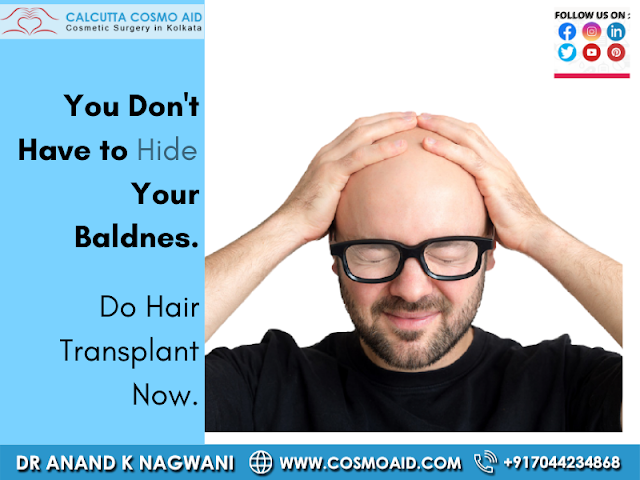Many women
find it difficult to achieve a flat stomach even after a perfect diet or
exercise especially after pregnancy or major weight loss. Some also have
exercise resistant fat which doesn’t shed off even after trying everything. Lipoabdominoplasty
surgery in Kolkata has become one of the most common cosmetic surgeries to get rid of the
excessive fat or skin from the abdomen.
Introduction:
Lipoabdominoplasty
is a procedure which combines liposuction and abdominoplasty to remove excess
skin and fat from the abdomen. It is a perfectly safe cosmetic procedure where
the important structures of the abdomen like lymphatic vessels, nerves and
blood vessels are not harmed.
Lipoabdominoplasty is
a safe procedure which prevents the complications and tissue trauma that can be
involved with standard abdominoplasty such as hematoma (blood clot within the
tissues), seroma (fluid accumulation in tissues), necrosis (tissue death) and
fat necrosis.
Indications and
Contraindications:
Lipoabdominoplasty are
not suitable for the people with skinny abdomen and excessive skin, in that
case you have to opt for traditional abdominoplasty.
Lipoabdominoplasty can
be done to the patients having the following condition:
Presence of excess fat and redundant
skin on the tummy, flanks and around the back
Excess fat in the lower abdomen or pear
shaped body
Obese individuals with more fat in the
abdominal wall.
Weakened abdominal muscles
Excess superficial fat in the upper
abdomen
Fat in the abdomen and flanks giving an
appearance of rolls
Pre-operative Assessment:
Before the procedure, you entire medical history is taken
and a detailed physical examination is performed. It is recommended to stop
smoking for a couple of day to avoid complications after the surgery and
delayed healing. A healthy diet is recommended. Any kind of strict diet before
the surgery has to be stopped. The doctor to should know about all the
medication that you are taking currently and also about significant medical
conditions and past surgeries.
Surgical Procedure:
The surgery
is performed under general anaesthesia. Steps include in performing
lipoabdominoplasty are:
The surgeon
injects tumescent fluid, a mixture of saline, lidocaine, and vasoconstrictor to
the fat cells. This anaesthetic fluid helps to decrease swelling, bleeding and
facilitates removal of fat during liposuction.
Liposuction
is performed to extract maximum fats from abdomen, back and flanks.
Liposuction is performed to remove the
maximum quantity of fat from the abdomen, flanks and back.
After liposuction, an incision is made in
the lower abdomen from hip bone to hip bone. The skin is elevated up to the
umbilicus or navel in a special plane. The skin around the navel is then
isolated.
A tunnel dissection is performed to
expose the upper abdominal muscles. If required, the muscles are tightened.
The upper abdominal skin is pulled down
over the lower part of the abdomen; excess skin is removed, and the edges are
sutured.
Then, an umbilicoplasty or a belly
button surgery is performed to create a new opening for the already attached
umbilicus to the abdominal muscles. The new umbilicus is similar to that of the
natural umbilicus.
The fluid collected under the skin flap
may be drained or the space may be pre-closed depending on the surgeon’s
choice.
Post-Surgery Care
After a
surgery pain killers are prescribed to the patients to decrease the pain. It is
advised to rest with your hips and knees to exert less tension on the abdomen.
Generally the patient is released in an overnight or may be a day more if there
is any sign of complications which happens rarely. Stiches are mostly internal
and dissolving. Full recovery takes around 2-3 weeks.
Risks:
Like every
other surgery lipoabdominoplasty also has some complications and risk factors
which are observed very rarely though:
Infection
Delayed healing
Lung collapse
Deep vein thrombosis
Advantages:
Improved abdominal
sculpting because of the aggressive liposuction
Many patients will have a
short scar
Lower rate of
postoperative complications
Less likelihood of
postoperative numbness
Less swelling, bruising,
and faster recovery
Blood vessels, nerves or
lymphatic vessels do not get damaged anyway.
Conclusion:
Lipoabdominoplasty
is one of the most common cosmetic surgery that people undergo to achieve a
much more aesthetic self which increases the self confidence because it’s not
always easy move in life being obese.






















